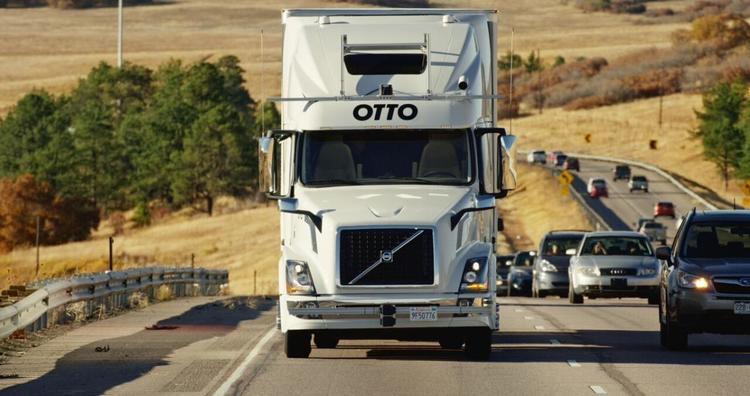
Keep Out Of The Danger Spots
The weight of a tractor-trailer rig--semi-truck or 18-wheeler, whichever you prefer--is approximately 35,000 pounds empty and up to 80,000 pounds fully loaded. Also consider semi-trucks in the United States are around 72 feet long, 8.5 feet wide and 13.5 feet tall.
That’s a pretty big vehicle and a pretty heavy one, too.
Now, let’s do a little calculating, considering the size and speed of an 18-wheeler. How long does it take a fully loaded semi to stop? At 60 mph, on a clear day, a fully-loaded tractor-trailer will need approximately 370 feet to stop, which is more than a football field. Please keep in mind this does not include driver reaction time or the .5 second delay found in air brakes.
So in general, it takes an 18-wheeler 40% longer to come to a complete stop than an average car. Depending on road conditions and reaction time, that discrepancy can be even wider.
Truckers are supposed to be professional drivers. This includes understanding how their speed, weight and closeness to other vehicles around them affect the drivers in those vehicles.
But this is really simple, it’s not complicated: These 18-wheelers are a lot bigger and heavier than your car, so you need to follow some tips for sharing the road with big trucks.
(1) Know the blind spots.
Semi-trucks have blind spots on each side. A primary consideration should be, if you can’t see the truck driver in the side mirror, then most likely, he can’t see you, either. If you plan to speed up or slow down to avoid these blind spots, be careful if you have to merge. The semi driver needs to be able to see you to avoid hitting you.
(2) Know how to pass safely.
Trucks are slow, especially when going up a hill. To pass a truck, make sure you can see the driver in the mirror. Signal, then move to the left lane. Speed up and pass the truck quickly and safely, moving through the blind spots quickly as well. Trucks naturally gain speed on a downward slope, so avoid passing in such a situation. If a truck passes you, stay in the right lane. If you must, slow down and give the truck room. Trucks are big and needs plenty of space when passing and while changing lanes or merging.
(3) Do not cut in front of a truck.
You may be headed for disaster if you cut off a semi-truck. How could this happen? Again referring to those blind spots, if you happen to move through a trucker’s blind spot, then you may appear out of nowhere. Even if the truck driver can see you when you pull directly in front of them, they may not be able to stop or slow down quickly enough. Remember, at 60 mph, a fully-loaded semi requires the length of a football field to come to a complete stop.
(4) Do not follow too closely.
Like most of us, a semi-truck needs plenty of personal space. If you’re tailgating, you’re in one of the trucker’s main blind spots. In the event of a crash, you could be pushed underneath the truck should you be following too closely. The next time you’re on the highway with 18-wheelers, look at how high off the ground they truly are, because they’re higher than you might think. The truck is also no different than a straight-shift vehicle in that it could roll back when stopped and then taking off again. If you’re too close, you could pay a price.
(5) Know that trucks make wide turns.
Semis have a wide turn radius. In fact, truckers may even start a turn from the middle lane. Give a turning semi plenty of room. Make sure you’re aware of the curb, because getting caught between a semi and the curb is definitely not pleasant. Don’t block an intersection or stop in front of the line so that trucks can turn safely.
(6) Keep your road rage in check.
Since semis aren’t the fastest vehicles on the road, they need plenty of time to gain speed after being stopped. Usually, they’re not going to be traveling at high speeds. Think of them as the gorilla in the room: Driving aggressively, honking your horn and getting mad isn’t going to change anything, except possibly create distractions or causing an accident. Be patient and refrain from whipping in and out between other vehicles when driving around trucks.
(7) Buckle your seatbelt--always.
You the driver and all of your passengers should always be buckled in. No excuses. It only takes a few seconds to buckle your seatbelt and that brief time can often mean the difference between life and death. Kids don’t get a pass, either; they should be buckled into the appropriate car seat.
(8) Don’t drive distracted.
Keep your attention on the road. If you receive an important call or text, pull over. Do not carry on a verbal or text conversation while driving. Driving distracted is extremely dangerous; really, not much different than driving impaired from drinking alcohol or drugs.
(9) Do not drive if you’re overly tired.
If you’re tired, you’re not at your best, especially behind the wheel. If you do find yourself becoming tired, you can take a break and walk around, you can switch the driving duties with someone else if you have another driver in the car, or you can find a safe place and pull over and get some rest so that you can continue. Sometimes you need a refresh and take a little break before continuing.
(10) Don’t drive impaired.
Referring back to number 8, alcohol and other substances can severely hurt your reaction time and decision-making. And no, there really isn’t a “safe” level for drinking before driving. If you’re taking medications, particularly cold medicines, some can cause light-headedness, drowsiness or impaired reaction time. These type medicines can affect you whether they are over-the-counter or prescription. If this is the case, make other driving arrangements.
Sharing the road with 18-wheelers can be nerve-wracking. If you remember the movie Jurassic Park and how the bigger dinosaurs ran alongside vehicles and the humans themselves, you get the picture.
All things considered, and the fact that semi-trucks are much bigger than passenger cars, these are a few things you can do to stay safe while driving around those big trucks. We all need to be aware of the hazards truck drivers are up against and keep out of the danger spots. CIS Insurance Agency values you and your safety!
